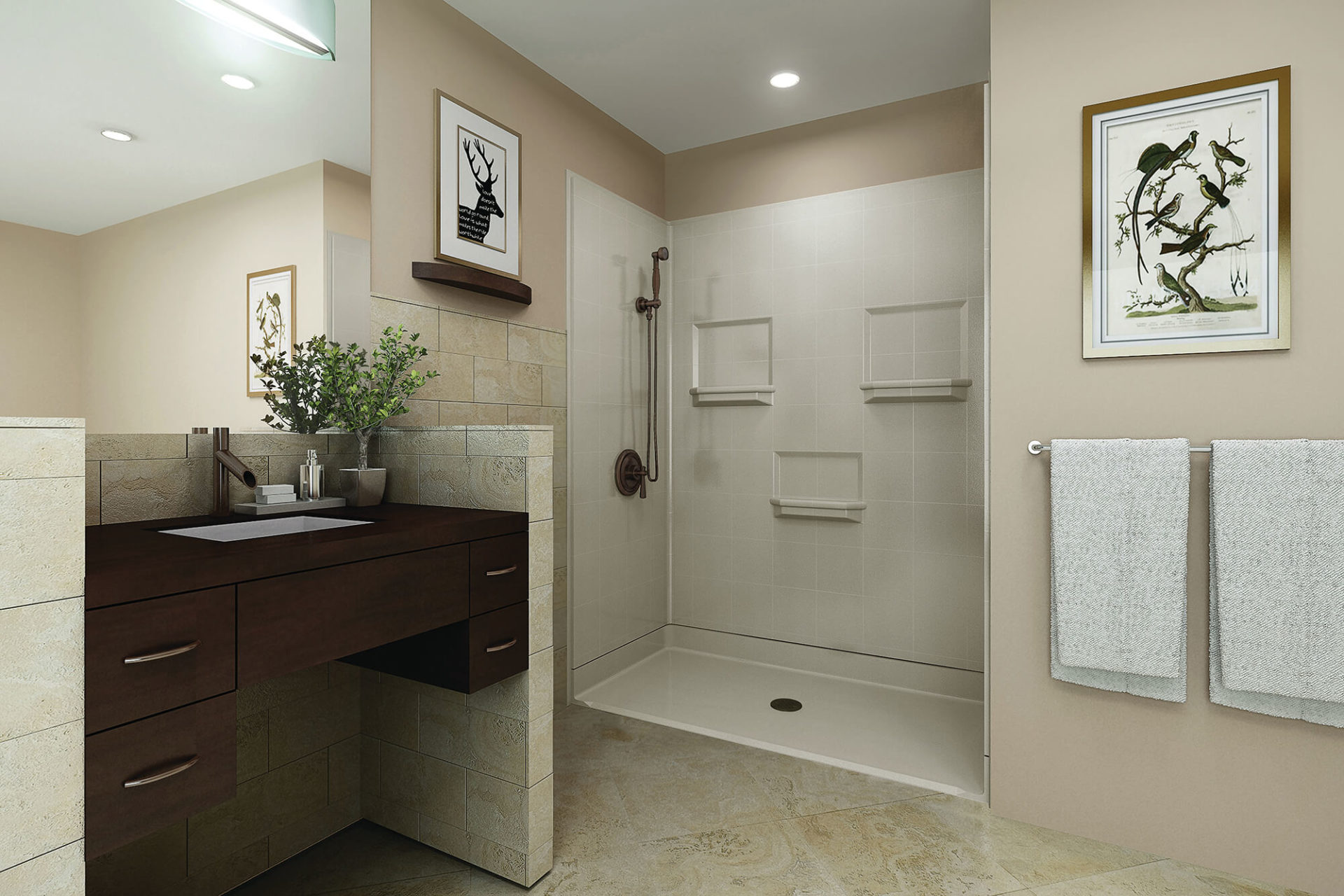
But even within the industry, these terms can raise a lot of questions: “What’s the difference between aging in place and universal design?” “Is a barrier free shower considered a roll-in shower?” or “Does an accessible bathroom mean the same thing as an ADA bathroom?”To help clear up the confusion, we’ll break down each of these accessibility-related terms and how we use them in relation to Bestbath products. This can be used as a reference when searching for products or discussing accessible options with clients.
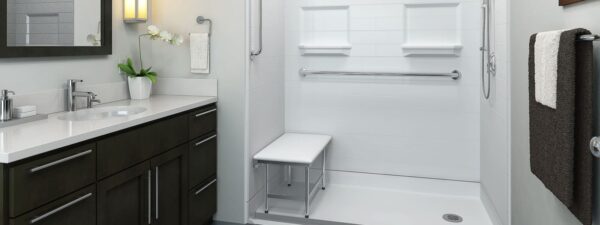
The word “accessible” is an umbrella term that can describe any product built for a wider range of needs and abilities. At Bestbath, the term accessible shower refers to any shower that has grab bars and a lower threshold — the barrier between the shower and the floor that forms the bottom of the shower’s entryway — for walk-in access. The thresholds on these showers can range anywhere from 0.5” to 5,” as long as an individual can walk into the shower.
A shower does not necessarily have to be compliant with ADA guidelines or built for wheelchair entry to be considered accessible.
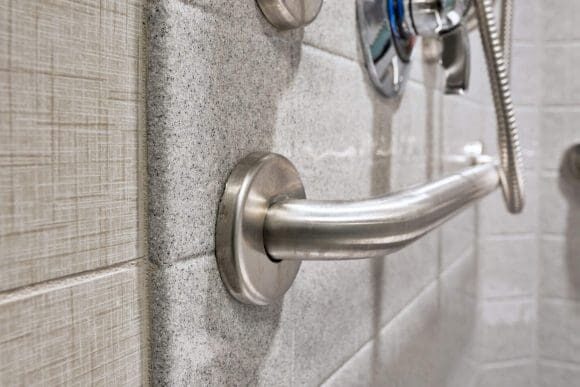
Unlike accessible showers, a barrier free shower can’t have a curb — a raised threshold — at all. These showers are all “zero entry,” meaning that an individual does not have to step over any barriers to enter the shower. This term can include showers fitted with a removable curb or a WaterStopper, a collapsible water dam that provides wheelchair-safe entry.
While a barrier free shower can allow for wheelchair entry, these products are not always necessarily compliant with ADA guidelines.
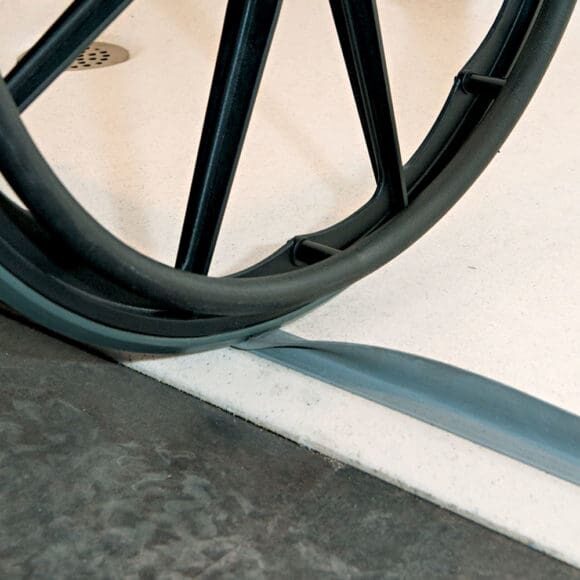
Transfer showers are compliant with ADA guidelines and have grab bars, shower seats and other accessories installed according to ADA regulations. These products are built for wheelchair users to safely transfer from a wheelchair to a shower seat. Like barrier free showers, there are no curbs on these showers, and the thresholds are beveled.
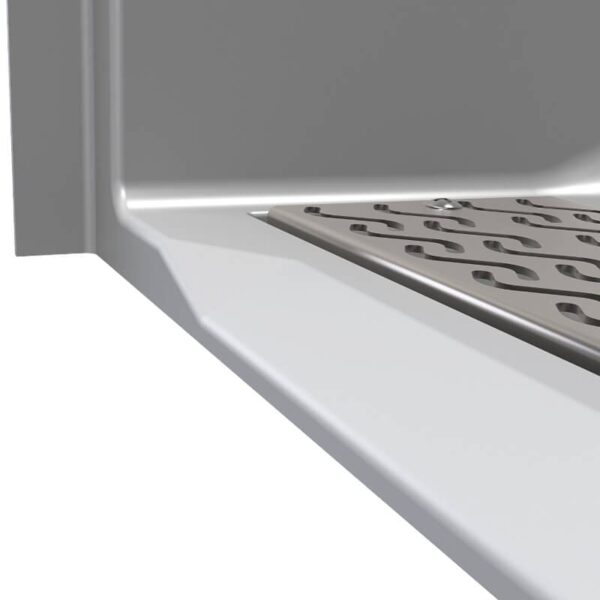
Roll-in Showers
Like transfer showers, roll-in showers similarly have ADA compliant dimensions and accessories (i.e. grab bars, shower seats, etc.). But unlike transfer showers, these products are built with a wider entryway and a beveled threshold so a wheelchair user can actually roll into the shower.
Universal Design
Universal design is a design principle used among architects and engineers. It describes a holistic view of the bathroom, where people of all needs and abilities can use the space safely and comfortably. This can mean installing walk-in showers, grab bars, lower sinks or any other solutions to make a space more accessible to more people, including children, individuals with disabilities and the elderly.
Aging in Place (also known as Living in Place)
Similar to universal design, aging in place is another perspective on livable design. It’s the idea that a space should be used and enjoyed even as its occupants grow older. Unlike universal design, aging in place focuses more on the effects aging can have on mobility and accessibility. Walk-in showers, grab bars, removable thresholds can all be installed in a bathroom to help meet the aging in place goals of its users.
“Accessible” can mean many things, and there’s certainly some overlap among the terms we use to describe it. But gaining a better understanding of the subtle differences can help you find the right solutions for your project and avoid miscommunication.
At Bestbath, we want to make it easy to find the right bathing solutions for your project. If you have any questions about our products, don’t hesitate to contact us.
Understanding the subtle differences.
“Accessible” can mean many things, and there’s certainly some overlap among the terms we use to describe it. But gaining a better understanding of the subtle differences can help you find the right solutions for your project and avoid miscommunication.
At Bestbath, we want to make it easy to find the right bathing solutions for your project. If you have any questions about our products, don’t hesitate to contact us.
Sign Up
For Our
Newsletter

